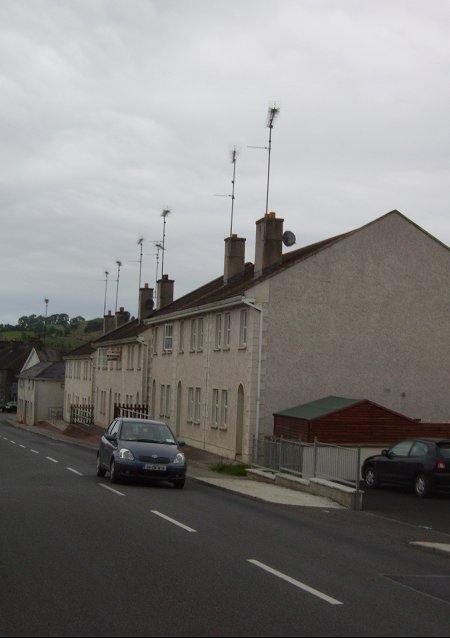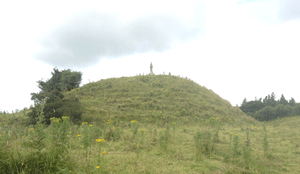|
List Of Townlands Of County Cavan
This is a sortable table of the approximately 1,979 townlands in County Cavan, Ireland. Retrieved: 10 September 2010. Duplicate names occur where there is more than one townland with the same name in the county. Names marked in bold typeface are towns and villages, and the word ''Town'' appears for those entries in the Acres column. Townland list References {{reflist |
Townland
A townland ( ga, baile fearainn; Ulster-Scots: ''toonlann'') is a small geographical division of land, historically and currently used in Ireland and in the Western Isles in Scotland, typically covering . The townland system is of Gaelic origin, pre-dating the Norman invasion, and most have names of Irish origin. However, some townland names and boundaries come from Norman manors, plantation divisions, or later creations of the Ordnance Survey.Connolly, S. J., ''The Oxford Companion to Irish History, page 577. Oxford University Press, 2002. ''Maxwell, Ian, ''How to Trace Your Irish Ancestors'', page 16. howtobooks, 2009. The total number of inhabited townlands in Ireland was 60,679 in 1911. The total number recognised by the Irish Place Names database as of 2014 was 61,098, including uninhabited townlands, mainly small islands. Background In Ireland a townland is generally the smallest administrative division of land, though a few large townlands are further divided into h ... [...More Info...] [...Related Items...] OR: [Wikipedia] [Google] [Baidu] |
Kildallan
Kildallan civil parish is situated in the Barony of Tullyhunco, County Cavan, Ireland. Etymology The name of the parish derives from Kildallan townland which is an Anglicisation of the Gaelic ''Cill Dalláin'' meaning the 'Church of Dallán Forgaill'. The earliest surviving reference to the name is for the year 1475 in the 'Calendar of Papal Registers Relating To Great Britain and Ireland: Volume 13, 1471-1484', where it is spelled ''Kylldallan''. Another mention is in the Life of Saint Máedóc of Ferns complied 1536, where it is spelled as ''Cill Dalláin''. Townlands The townlands of Kildallan civil parish are Aghabane; Aghaweenagh; Aghnacreevy; Ardlougher; Bellaheady or Rossbressal; Bocade Glebe; Breandrum; Callaghs; Carn; Claragh; Claraghpottle Glebe; Cloncose; Clonkeen; Clontygrigny; Clooneen; Coolnashinny or Croaghan; Coragh; Cormeen; Cornaclea or Tawlagh; Cornacrum; Cornahaia; Cornasker; Derrinlester; Disert; Doogary; Dring; Drumbagh; Drumbinnis; Dr ... [...More Info...] [...Related Items...] OR: [Wikipedia] [Google] [Baidu] |
Crosserlough
Crosserlough, historically known as ''Cros Ar Loch'', is a large civil parish in southern County Cavan, in the province of Ulster, Ireland. It is located between Ballyjamesduff and Lough Sheelin. The parish consists of three areas. Kilnaleck, which is a village, Drumkilly and Crosserlough. The latter is a small settlement at the northern edge of the eponymous townland. Facilities There are three schools in the parish, Kilnaleck, Drumkilly and Crosserlough. There are three Catholic Churches in Crosserlough, St Mary's Church (the Parish Church) in the townland of Cullow, in the Crosserlough area. This church was built in 1888. There is also a Church of Ireland church at Kildrumferton. There are five pubs, three grocery shops, a post office, a pharmacy, two off-licences (attached to pubs), a butcher's shop, a garage, barbers, drapery shop, a number of takeaway restaurants, a hairdresser, beautician, car dealership and approximately 30 houses in Kilnaleck. John Comiskey, a Chica ... [...More Info...] [...Related Items...] OR: [Wikipedia] [Google] [Baidu] |
Lurgan, County Cavan
Lurgan is a parish and Electoral Division, County Cavan, Ireland. Lurgan is also part of the historical barony of Castlerahan. The parish is part of the Diocese of Kilmore. The parish is also sometimes today called Virginia Virginia, officially the Commonwealth of Virginia, is a state in the Mid-Atlantic and Southeastern regions of the United States, between the Atlantic Coast and the Appalachian Mountains. The geography and climate of the Commonwealth ar ..., after the largest town in the parish and surrounding area. Population In the 1837, the parish had a population of 6387 and an area of 11328 statute acres. In 2011, the Electoral Division of Lurgan has a population of 565 and an area of 14.46 square kilometers. References {{Reflist Geography of County Cavan ... [...More Info...] [...Related Items...] OR: [Wikipedia] [Google] [Baidu] |
Castlerahan
Castlerahan () is a barony in County Cavan, Republic of Ireland. Baronies were mainly cadastral rather than administrative units. They acquired modest local taxation and spending functions in the 19th century before being superseded by the Local Government (Ireland) Act 1898. Etymology Castlerahan barony takes its name from Castlerahan townland, from Castlera an, an ancient hillfort located at . The name is derived from Irish ''Caisleán Raithín'', "stone fort of the little ringfort," although other writers link it with ''raithean'', "bracken", or with a Norse Gael leader named Raithin. Geography Castlerahan is located in the southeast of County Cavan, the area surrounding Lough Ramor. History The Luigni tribe lived in the area since the 8th century. It contains the parish of Munterconnaught, named for Cu Connaght Ua Raghallaigh (O'Reilly). The barony of Castlerahan was created by 1609 in the Plantation of Ulster, and was archaically spelled ''Castlerachan''. The barony g ... [...More Info...] [...Related Items...] OR: [Wikipedia] [Google] [Baidu] |
Granard
Granard () is a town in the north of County Longford, Ireland, and has a traceable history going back to AD 236. It is situated just south of the boundary between the watersheds of the Shannon and the Erne, at the point where the N55 national secondary road and the R194 regional road meet. History The town has been a centre of population since Celtic times, probably because of its elevated position offering a view over the surrounding countryside. It is mentioned in the ancient Irish epic, the '' Táin Bó Cuailgne'', as being one of the places where Queen Medb and her army stopped on their journey to take the ''Donn Cuailnge'' (the ''Brown Bull of Cooley''). The name of the village is itself so ancient as to be unclear even in Irish; the 11th-century writers of the ''Lebor na hUidre'' (containing the oldest written version of the ''Táin'') refer to it by means of a gloss as "''Gránairud Tethba tuaiscirt .i. Gránard indiu''" ("Gránairud of northern Teathbha, i.e. Grán ... [...More Info...] [...Related Items...] OR: [Wikipedia] [Google] [Baidu] |
Bawnboy
Bawnboy () is a small village and townland in a valley at the foot of Slieve Rushen, between Ballyconnell and Swanlinbar, in County Cavan, Ireland. A synod of the Roman Catholic Provincial Council of Armagh was held in Owengallees, Baunbuidhe (Bawnboy) on 25 May 1669 where the Bishop of Kilmore, Eugene MacSweeney tried to depose Thomas Fitzsimons, the vicar general of the diocese. Bawnboy is part of the ancient parish of Templeport, birthplace of St Mogue. Its most famous building is a Victorian workhouse, built in 1853, long disused and now derelict. Early history In medieval times the McGovern barony of Tullyhaw was divided into economic taxation areas called ballibetoes, from the Irish ''Baile Biataigh'' (Anglicized as "Ballybetagh"), meaning 'A Provisioner's Town or Settlement'. The original purpose was to enable the farmer, who controlled the baile, to provide hospitality for those who needed it, such as poor people and travellers. The ballybetagh was further divided in ... [...More Info...] [...Related Items...] OR: [Wikipedia] [Google] [Baidu] |

.jpg)



